If Andy Warhol was an animal, I think he might be an isopod.
Just like his bold pop art creations, these little critters come in a wide variety of vivid colors and patterns.
Whether you want a funky new isopod pet, or a valuable terrarium cleaning custodians, there’s a type of isopod for you. They’re basically like pokemon cards, but better.
In this article, we’re going to run down 12+ different types of isopods with the funkiest designs (in a loose order of increasing rarity).
So, stay till the end to see the rare masterpieces.
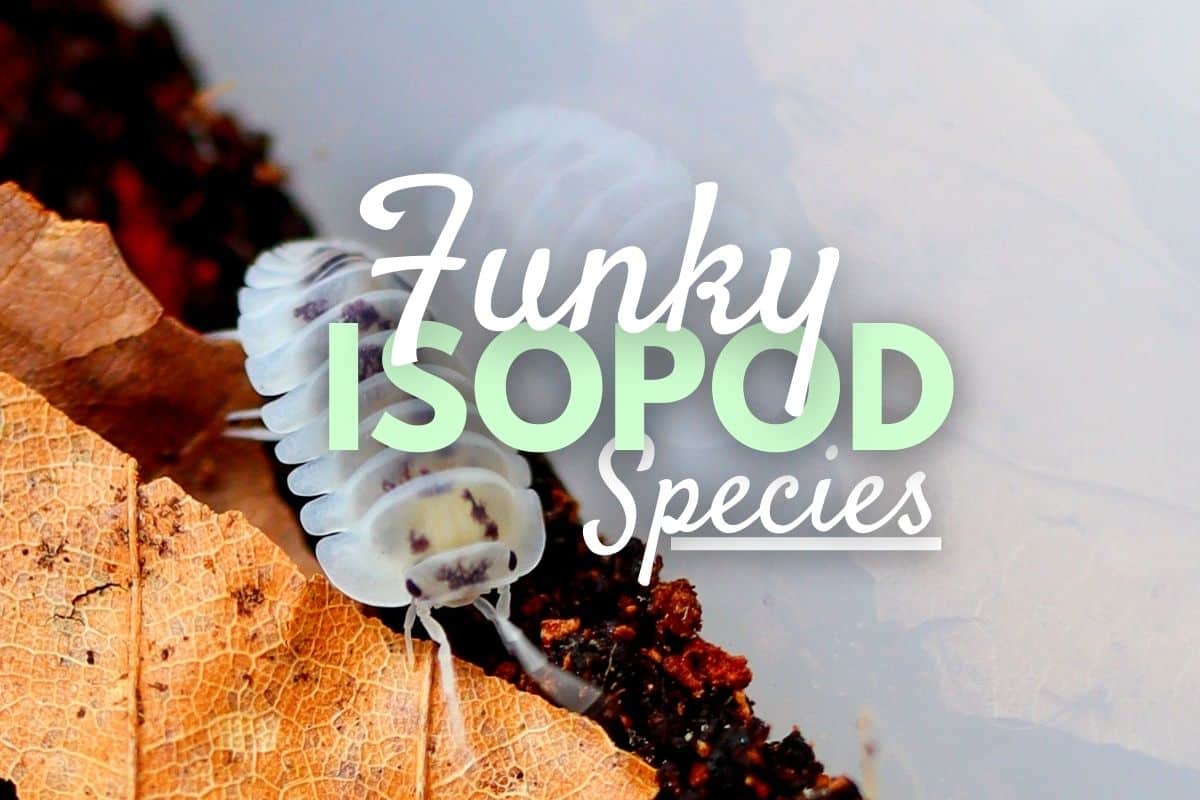
Terrarium Tribe is reader-supported. When you purchase through links on our site, we may earn an affiliate commission (at no further cost to you). 💜
12+ Isopod Species & Morphs
1 | Zebra Isopod (Armadillidium maculatum)
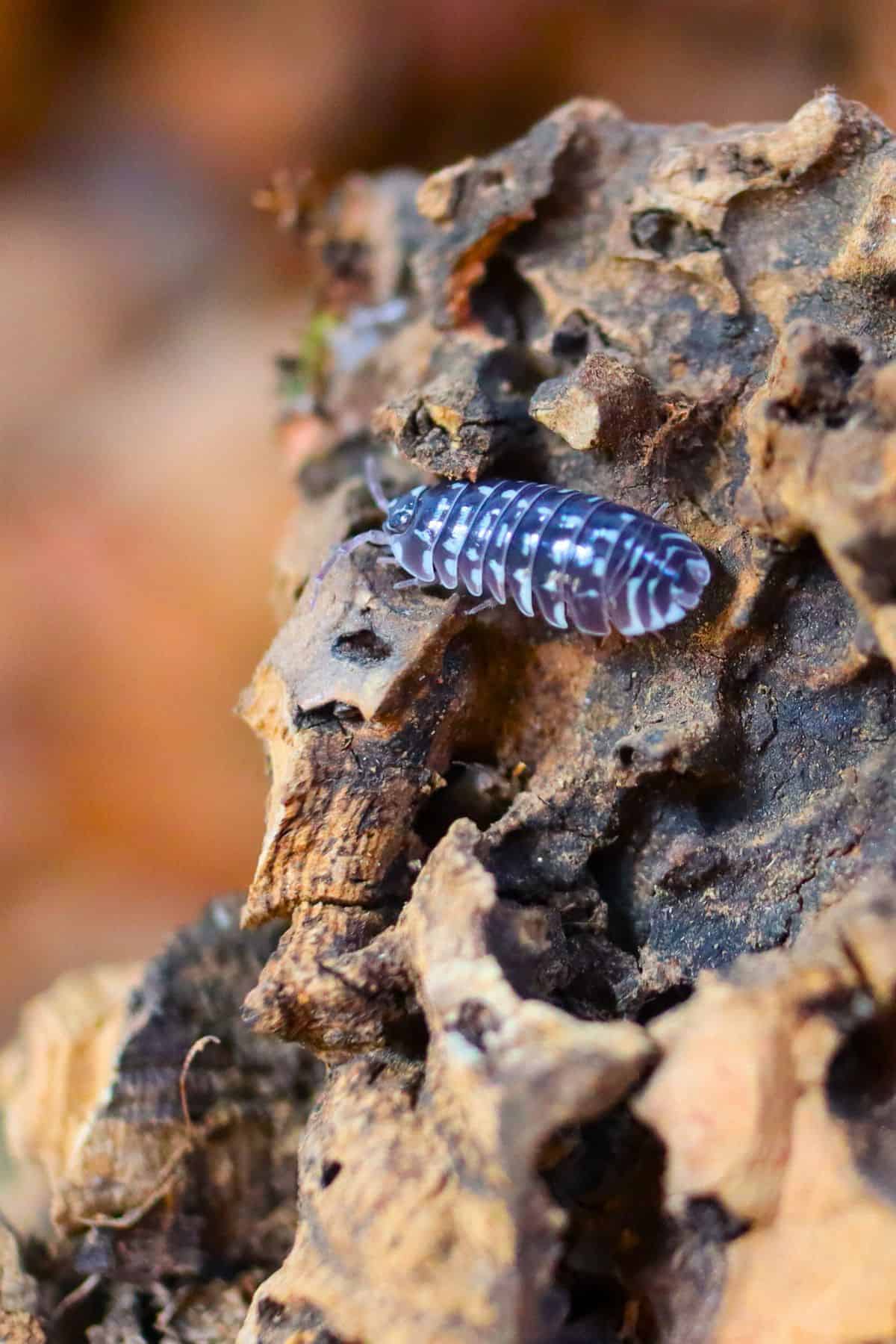
We’re starting the animal-themed trend here with the characteristic black and white stripes of the Zebra Isopods.
These guys are as active as they are bold.
So, you can expect to see them present and correct on your terrarium surfaces throughout the day. Plus, their busy nature makes them an effective cleanup crew.
They’re super easy to care for and to breed – making them a perfect beginner isopod.

2 | Dairy Cow Isopods (Porcellio laevis)

Resembling a cow with its white body and brown spots, the Dairy Cow Isopod is a true staple.
Much like their bovine namesakes, they’re really active feeders.
Dairy Cow Isopods are on the larger side, so they’re probably better for bigger tanks. Not to mention the fact that they are prolific breeders, so it won’t be long till you have a lot of them!
Check out the Giant Canyon Isopods for another large contender.
3 | Lava Isopods (Porcellio scaber)
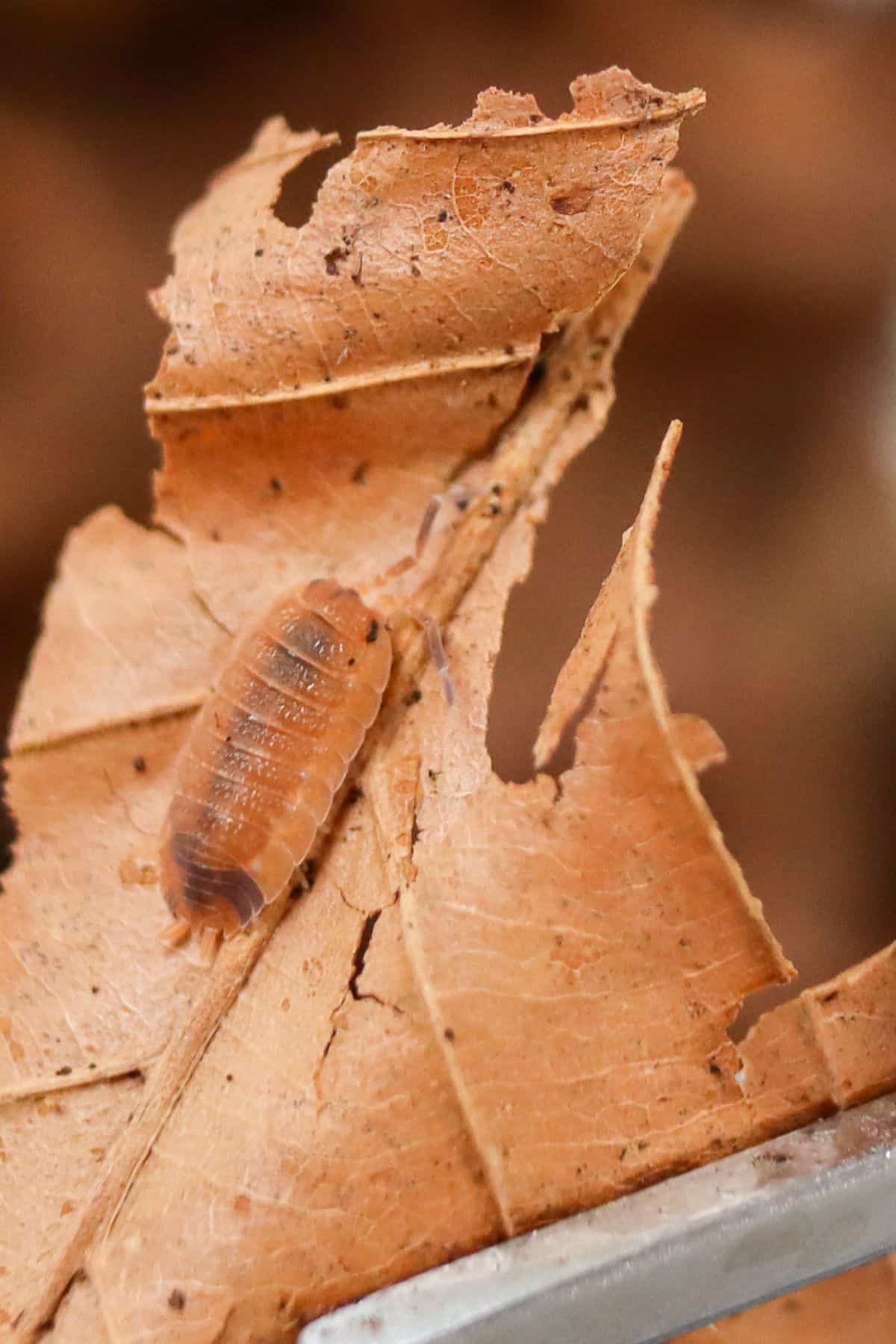
The stunning mottled black and burnt orange carapace of the Lava Isopod comes in all sorts of patterns and shades (kind of like the Orange Koi Isopods in reverse).
Truly, there’s something unique for everyone!
They’re also great all-rounders – so an easy pickup for both pet isopods and cleanup crews, too.
4 | Clown Isopods (Armadillidum klugii)
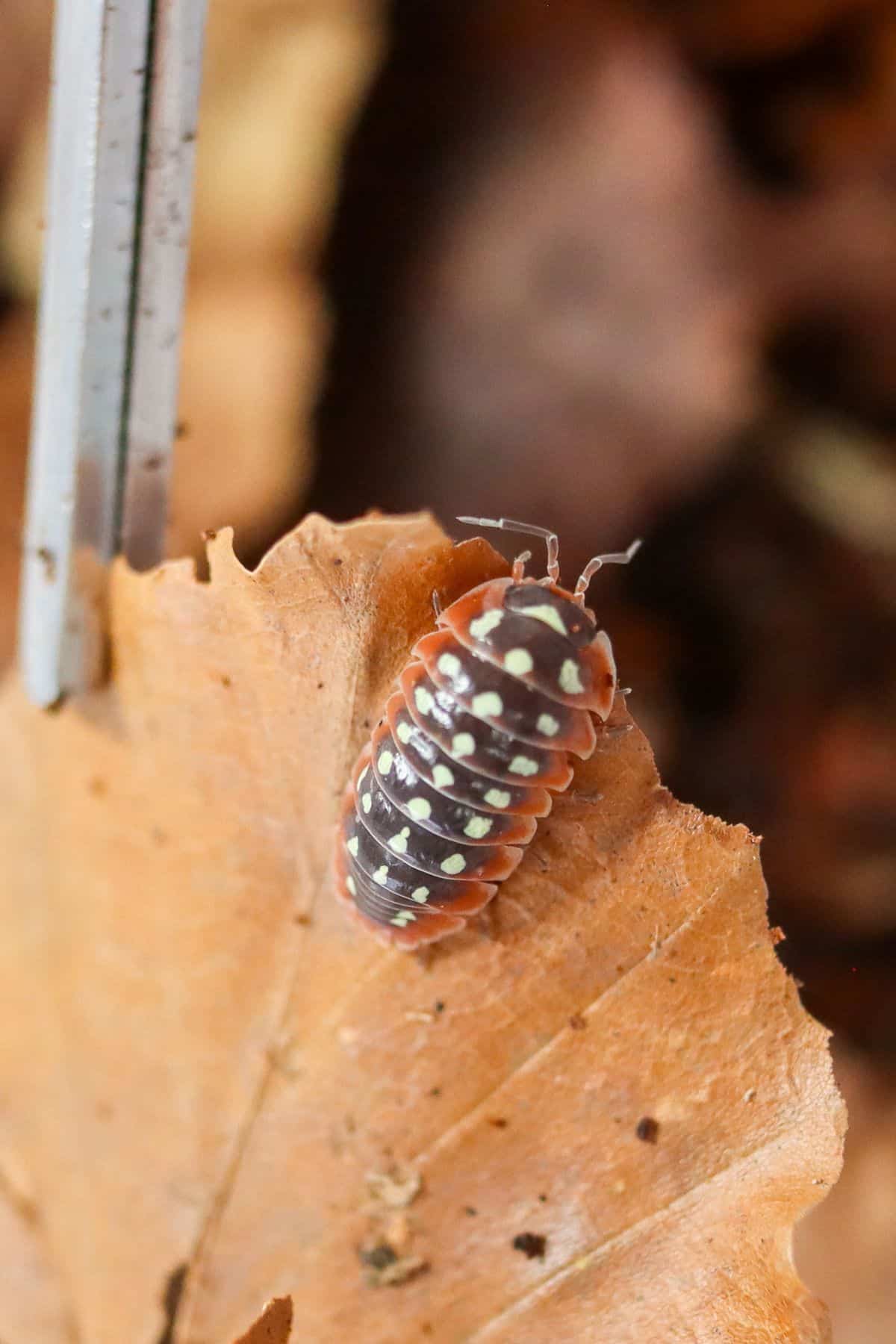
No “Funky Isopod Species” article would be complete without the species that are literally referred to as the Clown Isopod!
Take one look at you’ll see why.
With contrasting white and yellow polka dots and an orange skirt, these isopods are bursting with color and character.
👉 Shop “Dubrovnik” Clown Isopods.
5 | Orange Cream Isopods (Porcellionides pruinosus)
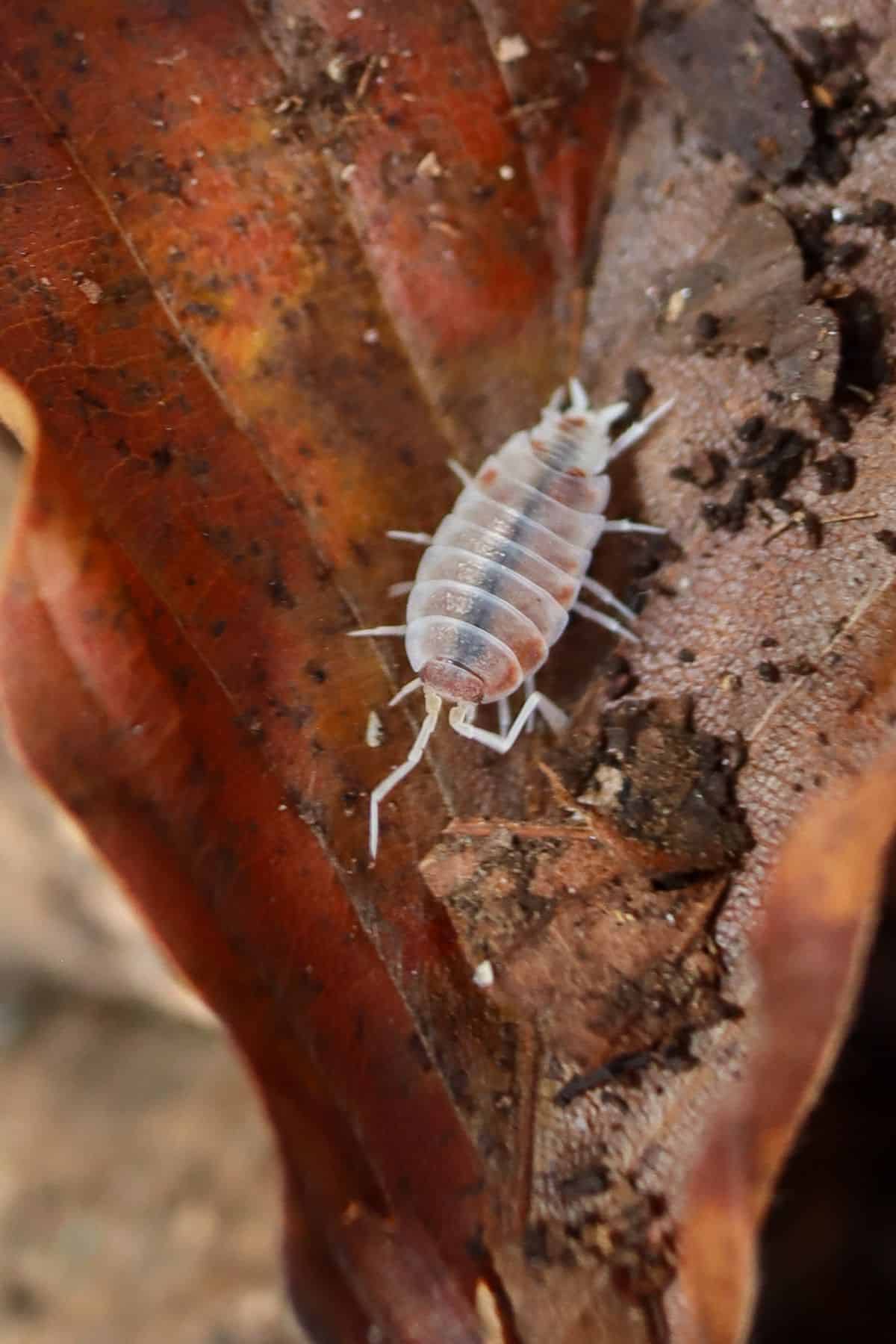
A fresh take on the popular Powder Blue Isopods and Powder Orange Isopods, the “Orange Cream” morph has a milky white body with random brown markings.
This versatile species can handle a variety of terrarium conditions, and they tend to adapt pretty quickly.
6 | Panda King Isopods (Cubaris sp.)
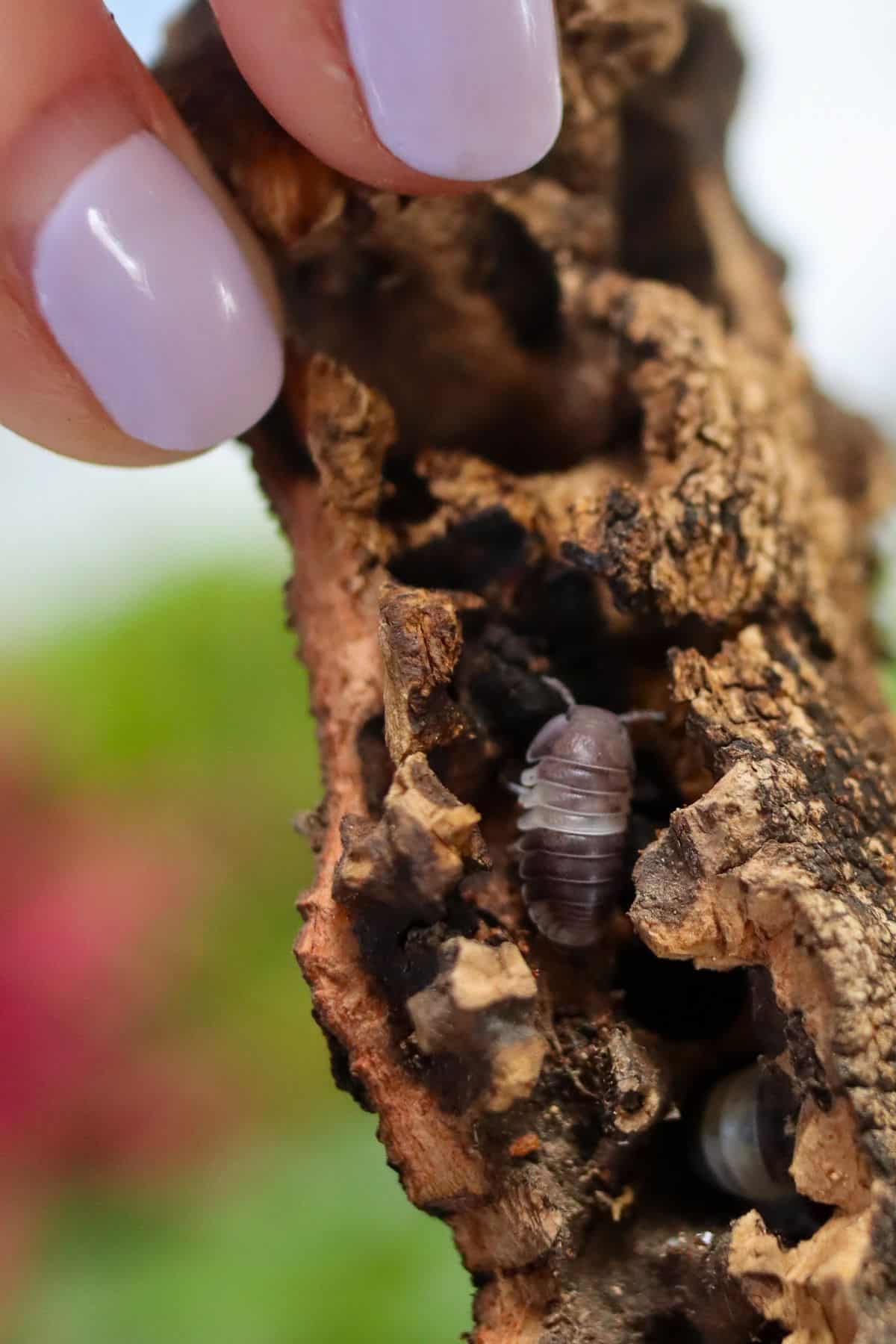
The final animal-themed isopod – I promise!
Here, we have the Panda King Isopod, the highly regarded entry-level Cubaris species. They’re super cute, easy to keep, and a fraction of the price of their rarer cousins.
Thankfully, they’re also quite a bit easier to breed, so you’ll have a nice little family of pandas in no time!

7 | Armadillidium gestroi (Yellow Spotted Isopods)
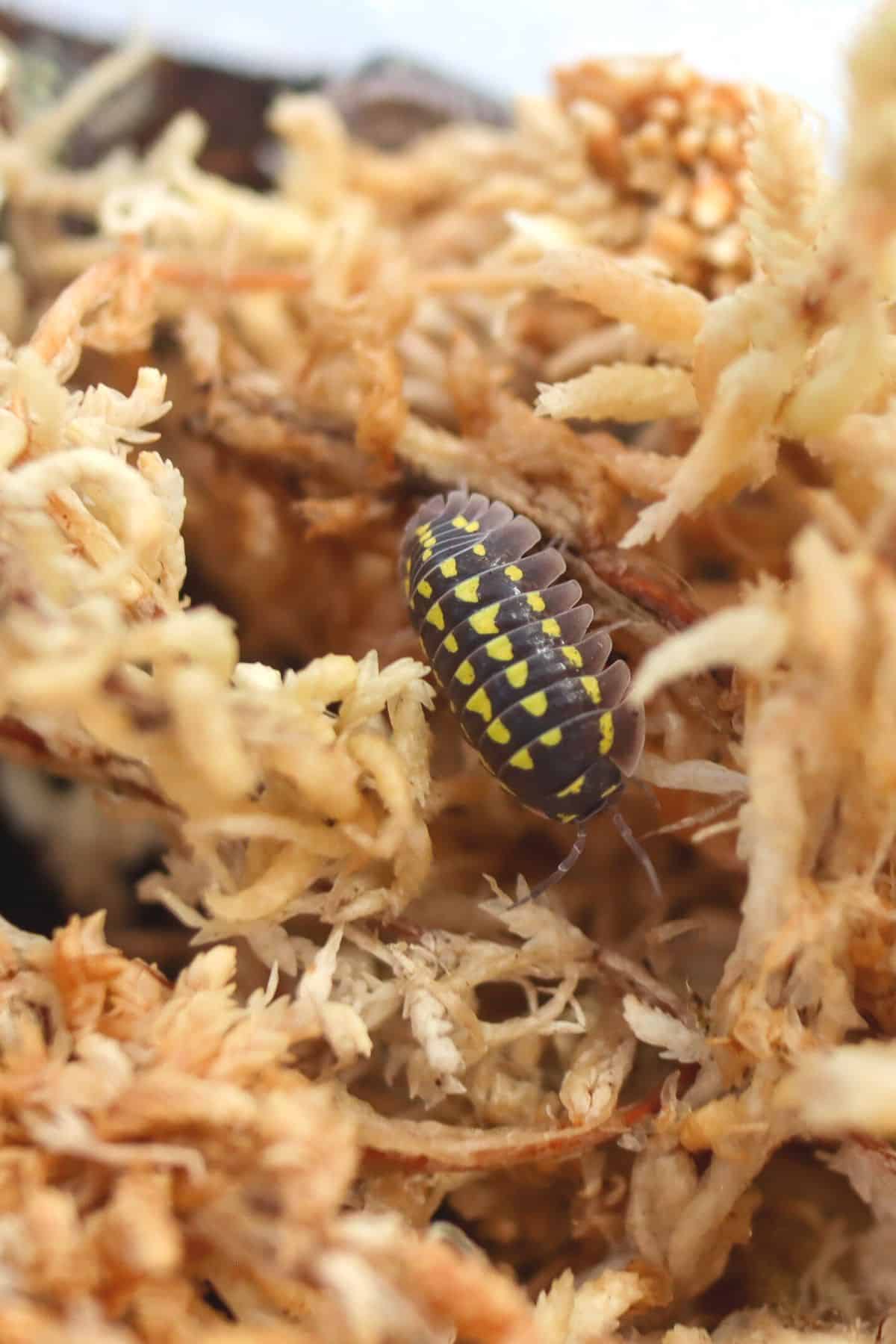
The Gestroi Isopods come from the same family as the Clown Isopods.
Can you see the resemblance?
Though they’re actually a lot more active, easier to care for, and quite a bit larger, too – so they make a fantastic isopod pet.
👉 Shop Yellow Spotted Isopods.
8 | Papaya Isopods (Cubaris murina)

What’s not to love about an isopod named after a fruit?
Saving the best till last, these dusty pink critters are perhaps my favorite colored isopod. Sometimes less is more, and their delicate pink/amber hues really caught my attention.
Plus, Cubaris murina makes a great cleanup crew, and they’re super easy to keep – you can buy them here on our store.
9 | Rubber Ducky Isopods (Cubaris sp)
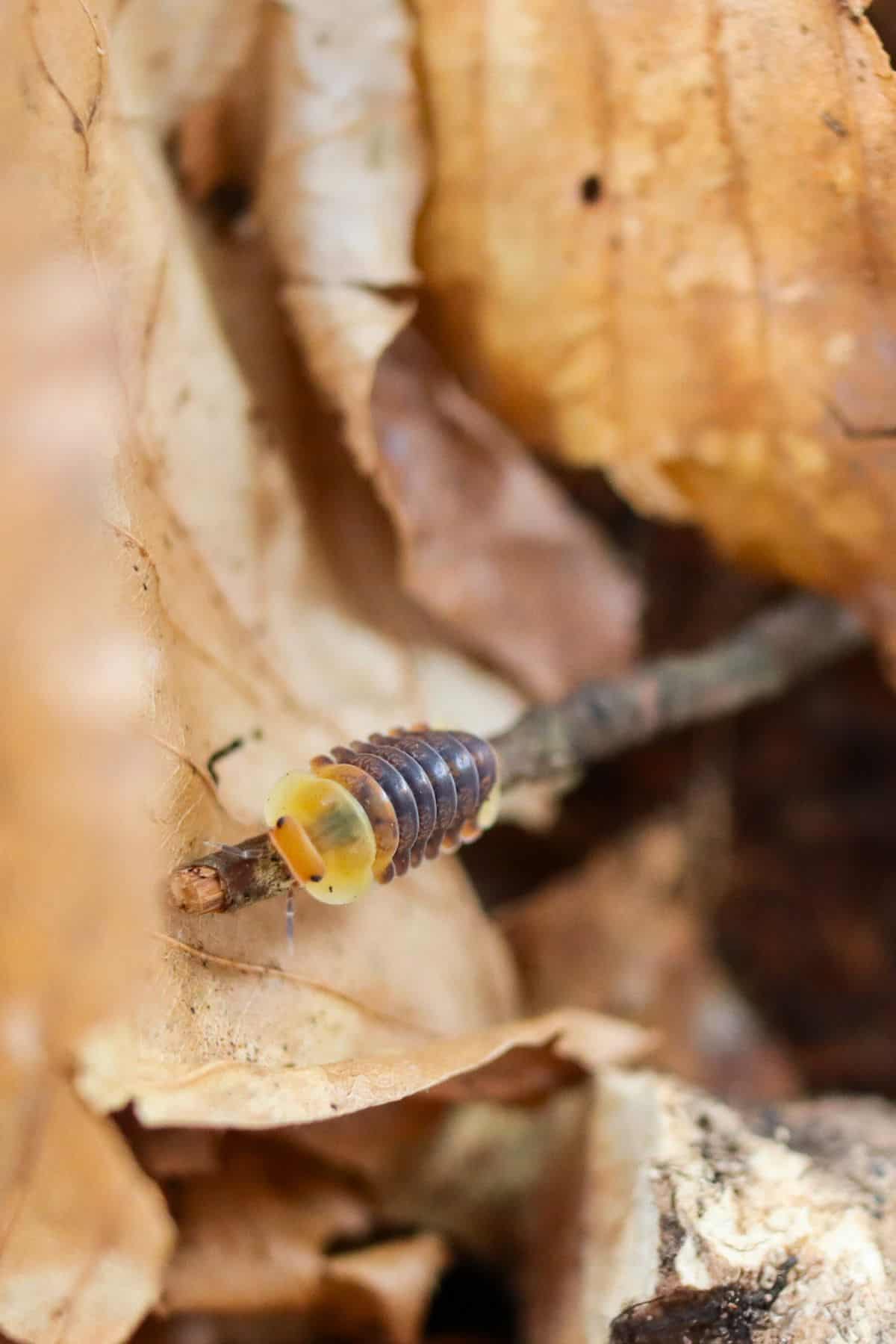
The isopod, the myth, the legend.
Honestly, the Rubber Ducky Isopod has been taking the industry by storm recently, and it’s showing no sign of slowing down.
With their cute little yellow faces and tails, this highly sought-after species really does look like a rubber ducky. Which is perhaps what gives them such universal appeal.
Check out some of the many other Cubaris isopods while you’re at it (e.g., Blonde Ducky Isopods or Pak Chong Isopods).
10 | Japanese “Magic Potion” Isopods (Armadillidium vulgare)

Surprisingly, these Magic Potion Isopods are technically the same species as the common pill bug.
But, one look will show they’re clearly special.
With luminous yellow splashes piercing through their translucent white carapaces, there are some serious sci-fi vibes coming off for me.
These medium-sized androids isopods are easy to take care of so they’re perfect for your average terrarium/vivarium.
11 | Shiro Utsuri Isopods (Nesodillo archangeli)
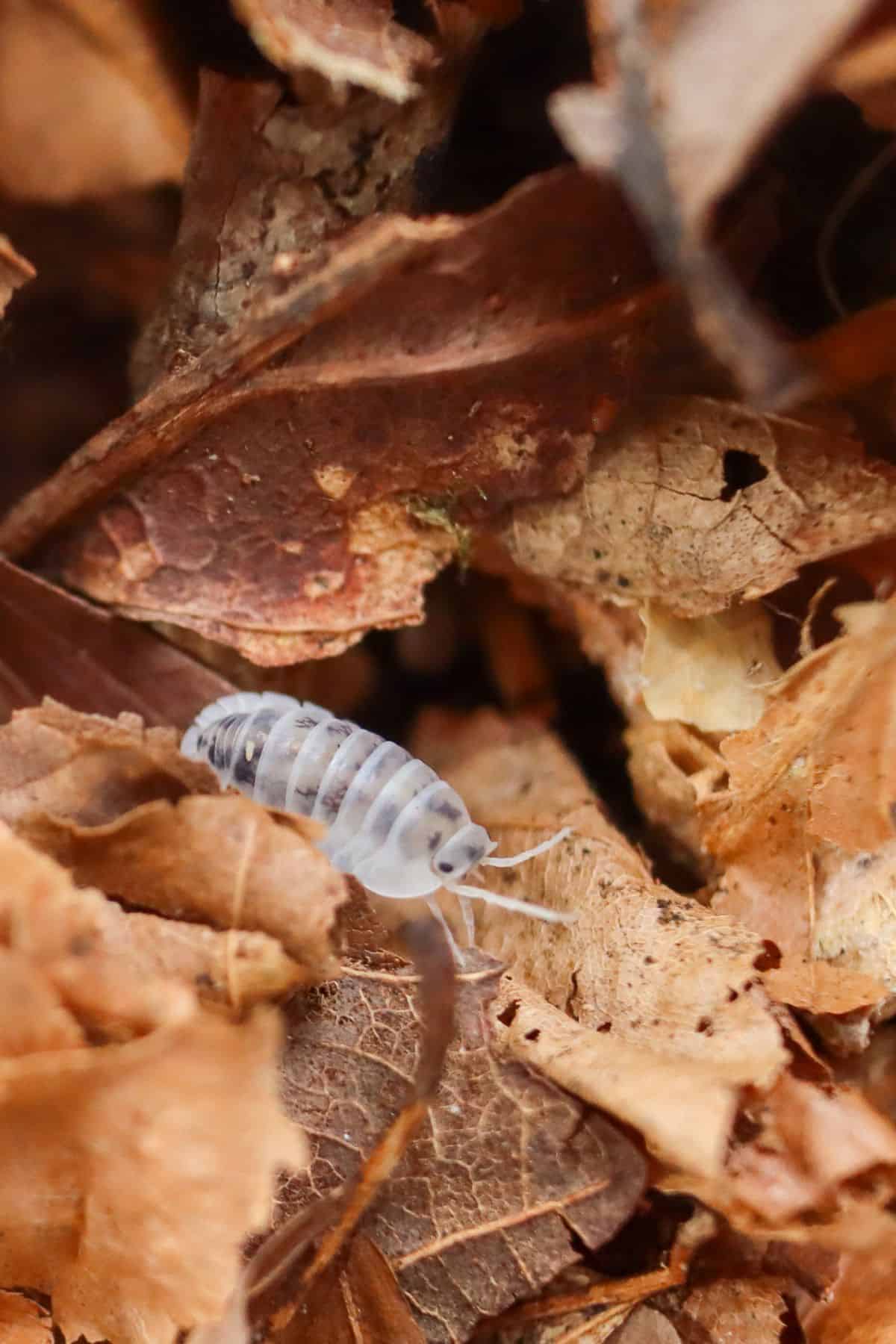
Shiro Utsuri Isopods are one of the latest designer isopods to come from Asia.
With “Shiro Utsuri” referring to the markings of a black and white Koi fish, these bright white isopods (particularly around their edges) with black flecks really fit the name.
We found these little guys to be super friendly and very active – perfect as a fun isopod pet!
12 | Cappuccino Isopods (Cubaris sp.)

Okay, I think these might be my favorite isopod morph (for now, at least).
The combination of ducky face + mottled creamy coffee carapace is too much.
We found them to be pretty bold and explorative, they’re more than happy to chill out in the open. Which is all the better to see and appreciate them.
13 | White Shark Isopods (Dwarf Cubaris sp.)

Last but by no means least, are the smallest (and possibly cutest) isopod on this list.
Going by the name Cubaris ‘White Shark,’ these little guys have a lot of potential in the terrarium world. For those who wanted a tropical-suited ducky species in small setups, these could be perfect.
Honorary Mentions:
Though these aren’t necessarily the flashiest of the isopod species, they’re great beginner ones.
- Dwarf White Isopods (Trichorhina tomentosa) – Shop now.
- Powder Blue Isopods (Porcellionides pruinosus) – Shop now.
- Powder Orange Isopods (Porcellionides pruinosus) – Shop now.
Different Types of Isopods – A Final Word
There are so many more cool-looking isopod species entering the market – I really couldn’t name them all.
As the hobby expands and matures, it can be easy to get overwhelmed by the deluge of new varieties. But just remember, many of them share the same temperaments and care characteristics – it’s often more of a visual evolution.
If you can get a general grasp of the particulars of any genus of isopods (e.g. Cubaris), you can quickly form a rough idea of any new Cubaris variety you come across. Plus, you can always rely on the tried-and-tested isopod species to get you started.
For more on how to use these terrarium custodians, check out my guide to the isopods and springtails cleanup crew combo.
Or go ahead and browse our current collection of isopods for sale online.

I love the Dalmatian isopods
rubber duckie isopods and diary cow isopods are the BEST!!!!
I started a terrarium project about a year ago before I even knew about bioactive setups. I then acquired about a half dozen Lava isopods and have successfully increased their numbers to about 150+ while I continue to work on the terrarium. I have left side paralysis and am slowly getting it done with a DIY piezoelectric misting waterfall, with meandering stream and an upper catch pool and lower reptilian soaking pool. I noticed a few color morph throwbacks and separated them unto their own breeding container. I now have an unknown number of Lavas with orange and varying degrees of grey patchy splotching and 9 blemish free totally shiny dark gunmetal gray isopods which I breeding to add a colony with a striking contrast to the original Lavas.
Thanks so much for putting this together. I’ve just set up my first terrarium, which looks great all planted with a deep substrate, already have about 10 isopods, not sure which ones they are grey. Have a bumblebee millipede coming, I am so excited to have found this great hobby. Thanks again for all the useful info